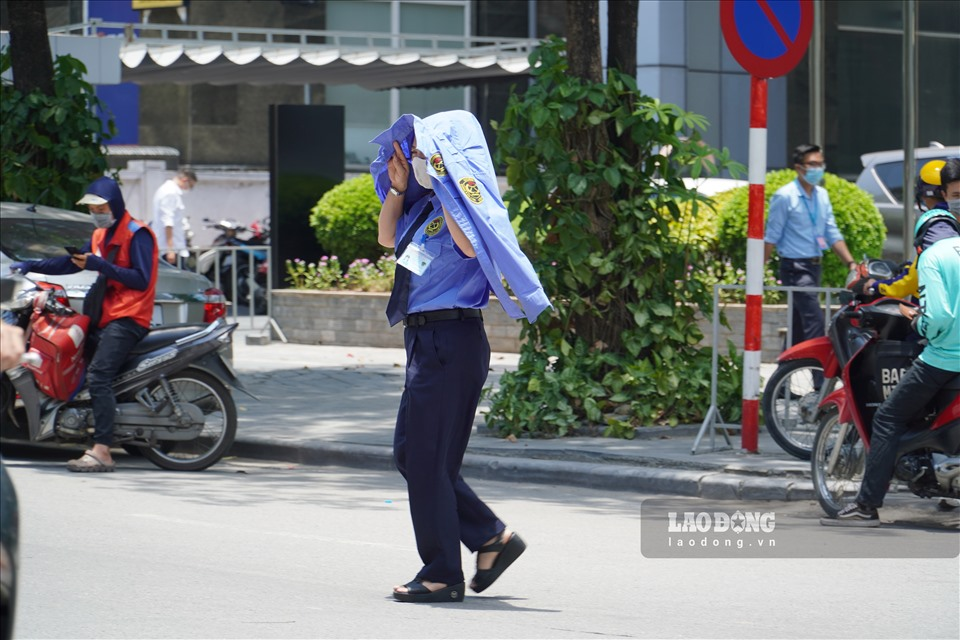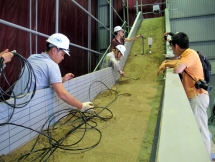Dubai Beats The Heat By Making Fake Rain
| Workers in Hanoi grapple with blazing weather | |
| Vietnamese professor developed NASA-funded rainfall observation app | |
| First ever experiment with landslide artificial rainfall simulator |
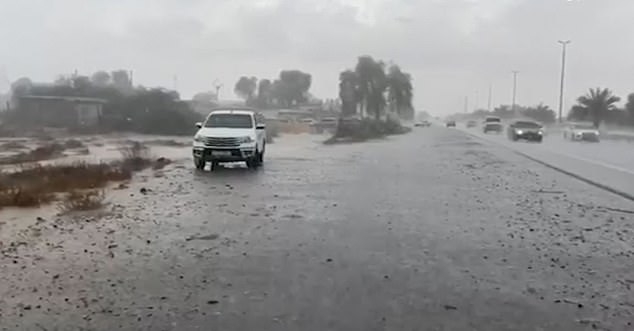 |
| Video footage released by the UAE's National Center of Meteorology shows monsoon-like downpour across the country which create a sheet of rain on the highways. Photo Daily Mail |
The city in the United Arab Emirates (UAE) has come up with drone technology that "shocks" clouds into producing rain.
The rain is formed using drone technology that gives clouds an electric shock to 'cajole them' into clumping together and producing precipitation.
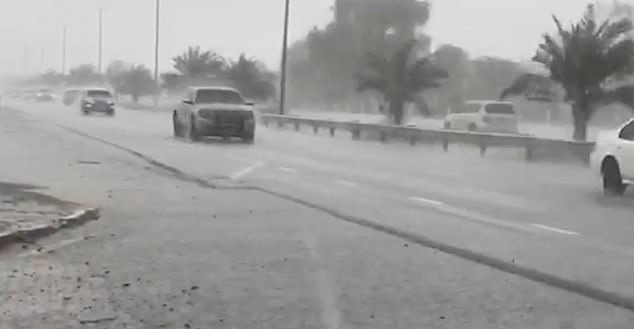 |
| The United Arab Emirates is creating its own rain using drones that fly into clouds and unleash electrical charges to beat the sweltering 122 degrees Fahrenheit heat. Photo Daily Mail |
And it is working. Video footage released by the UAE's National Center of Meteorology shows monsoon-like downpours across the country which create a sheet of rain on the highways.
Waterfalls are also seen on the side of roads as drivers in SUVs struggle to navigate the torrential rain - despite the country being in the middle of a summer heatwave where temperatures have soared above 122F (50C).
The UAE's cloud seeing operations are part of an ongoing $15 million (£10.8m) mission to generate rain in the country, which ranks among the world's top 10 driest countries with an average rainfall of just three inches (78 millimetres) - 15 times less than what falls in an average year in the UK, Daily Mail reported.
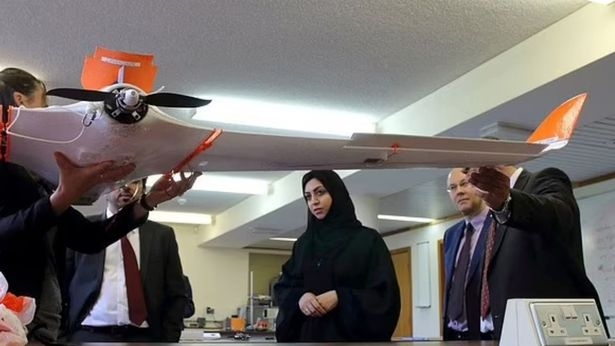 |
| The United Arab Emirates is creating its own rain using drones that fly into clouds and unleash electrical charges to beat the sweltering 122 degrees Fahrenheit heat. Photo Mirror UK |
What is cloud seeding?
The cloud seeding process involves drones that are used to shoot electrical charges into clouds, causing them to clump together and trigger more rainfall.
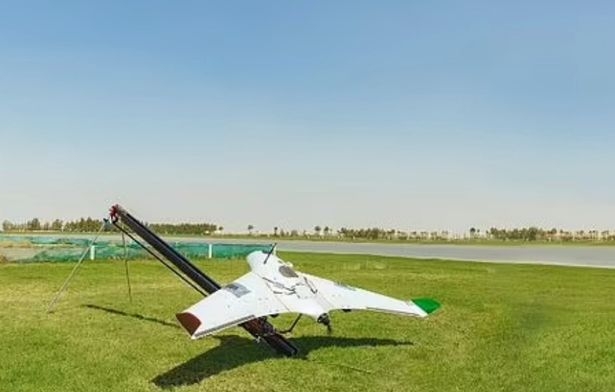 |
| The drone system is thought to be an eco-friendlier alternative as it doesn't entail the use of chemicals. Photo Mirror UK |
Footage shared on Sunday by the UAE’s National Centre of Meteorology (NCM) showed the intense showers flooding roads in addition to flashes of lightning.
Rainmaking has become common in dry countries such as the UAE, which typically only records 10cm of rain a year, the Independent reported.
“The global water shortage is worsening in many parts of the world, so the demand for fresh water is increasing,” said Linda Zou, a professor at the UAE’s Khalifa University of Science and Technology.
“Cloud seeding could be one of the methods that can contribute to alleviating the water problem.”
| Gulf Today reported that, since the beginning of 2021, the NCM has conducted 126 instances of cloud seeding. These types of weather-manipulation attempts are not limited to the UAE: according to a March report, published by The Guardian, several US states are looking into cloud seeding as a way to combat severe drought conditions. The method employed in the US, however, relies on a slightly different technology, in which drones add small amounts of silver iodine to clouds. The particles prompt water droplets to form, thus potentially increasing rainfall. |
How cloud seeding works
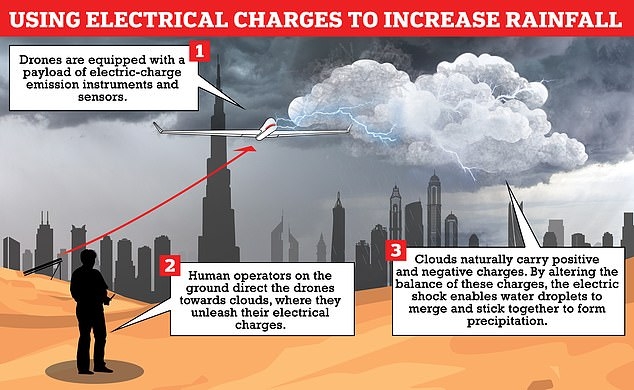 |
| Photo Daily Mail |
Microscopic particles of silver iodide are shot into existing clouds using land based generators or aircraft.
Silver iodide is an ice-forming agent, which causes supercooled water droplets to freeze in the clouds.
The 'ice embryos' interact with the surrounding water droplets, and eventually grow to snowflakes.
These fall to the ground as snow or raindrops, depending on the surface temperatures.
Cloud seeding can also, in some cases, cause the cloud to grow larger and last longer than it would have without the modification.
Research into cloud seeding dates back to the 1940s—however, it's only in recent years that the technology has shown to be effective.
However, it's important to note that while cloud seeding may be beneficial, it will not address the root causes of drought, nor is it a foolproof method.
As University of Colorado researcher Katja Friedrich explained to The Guardian: "It needs to be part of a broader water plan that involves conserving water efficiently, we can't just focus on one thing. Also, there is a question whether you will be able to do it in a changing climate—you need cold temperatures and once it gets too warm you aren't able to do the cloud seeding."
The Scientific American reports that "at least eight states" across the western US are involved in current cloud seeding operations, with the majority of the work taking place in Colorado, Utah, and Wyoming. Also participating are Nevada, California, New Mexico, and Arizona.
Most arid country on Earth
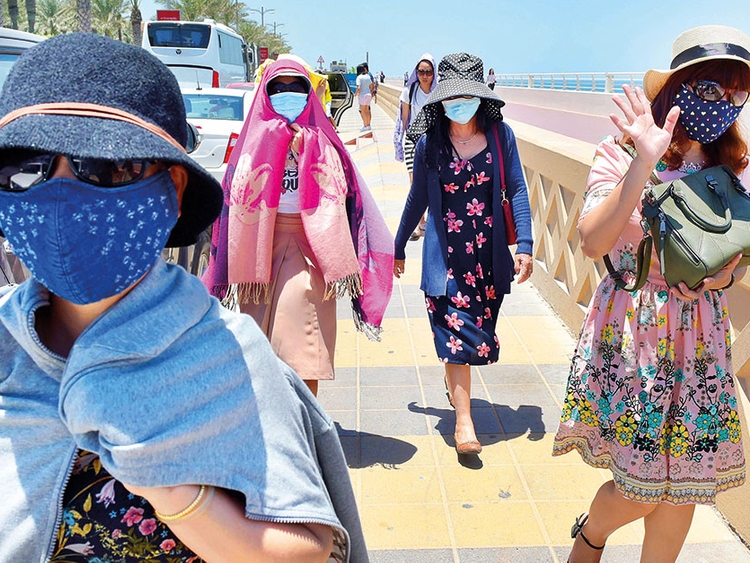 |
| Tourists cover their faces to save themselves from the scorching sun in Dubai. Photo Gulf News |
The UAE is one of the most arid countries on Earth, and it hopes the technique could help to increase its meagre annual rainfall.
It is part of multi-million efforts to tackle the blistering weather and bring up the meagre average of just four inches of rainfall a year in the Middle Eastern country.
According to News Week, the Middle Eastern country receives an average of four inches of rain per year and summer temperatures that routinely surpass 120 degrees, reported the news outlet. Additionally, its sinking water table—an essential source of fresh water—poses a serious threat. As a result, in 2017, the UAE invested a total of $15 million across nine projects hoping to increase rainfall.
The country - one of the most arid on Earth - is currently grappling with a heatwave that regularly sees residents roast in temperatures of 50C.
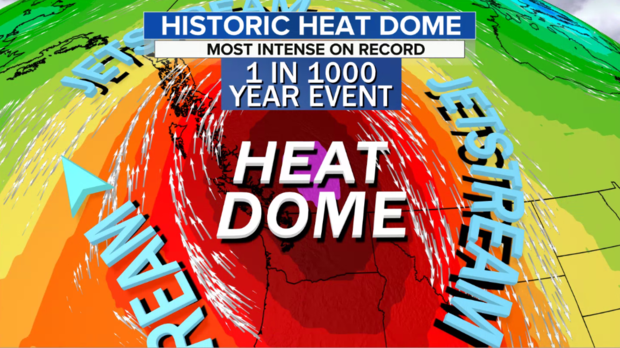 | What Causes Unprecedented Heatwave in the Pacific Northwest? A historic heatwave is sweeping through most of the Pacific Northwest. Experts believe that climate change is the main culprit. |
 | Top Vietnamese destinations to beat the heat If you still have no clue where to go for a cooling experience this summer, here is a list of eight popular destinations from across ... |
 | How Combating Your “Inner Heat” May Keep You Healthy In Today’s Environment All across the world, societies, countries, and communities are being impacted by a global pandemic. While many experts are rushing to create a vaccine that ... |
Recommended
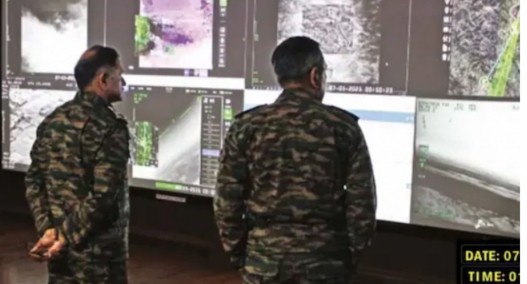 World
World
India reports 9 Pakistani Aircraft Destroyed In Operation Sindoor Strikes
 World
World
Thailand Positions Itself As a Global Wellness Destination
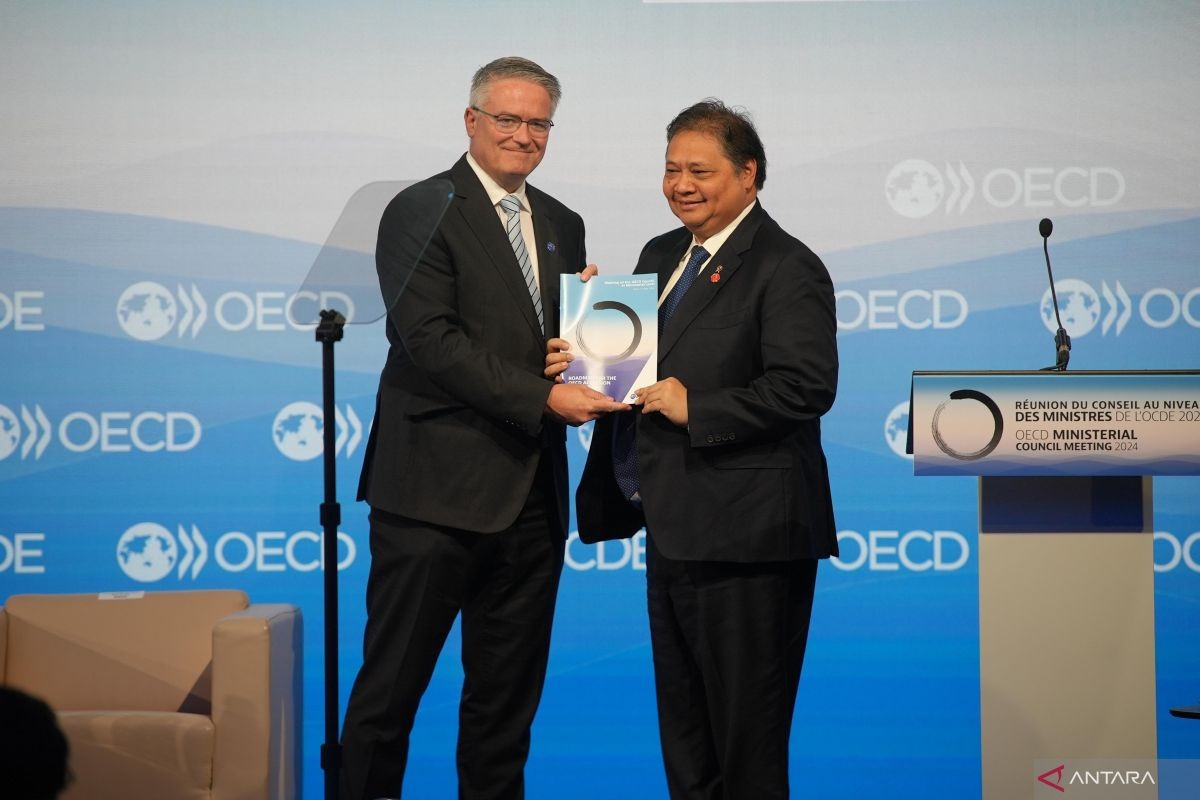 World
World
Indonesia Accelerates Procedures to Join OECD
 World
World
South Korea elects Lee Jae-myung president
Popular article
 World
World
22nd Shangri-La Dialogue: Japan, Philippines boost defence cooperation
 World
World
Pakistan NCRC report explores emerging child rights issues
 World
World
"India has right to defend herself against terror," says German Foreign Minister, endorses Op Sindoor
 World
World

